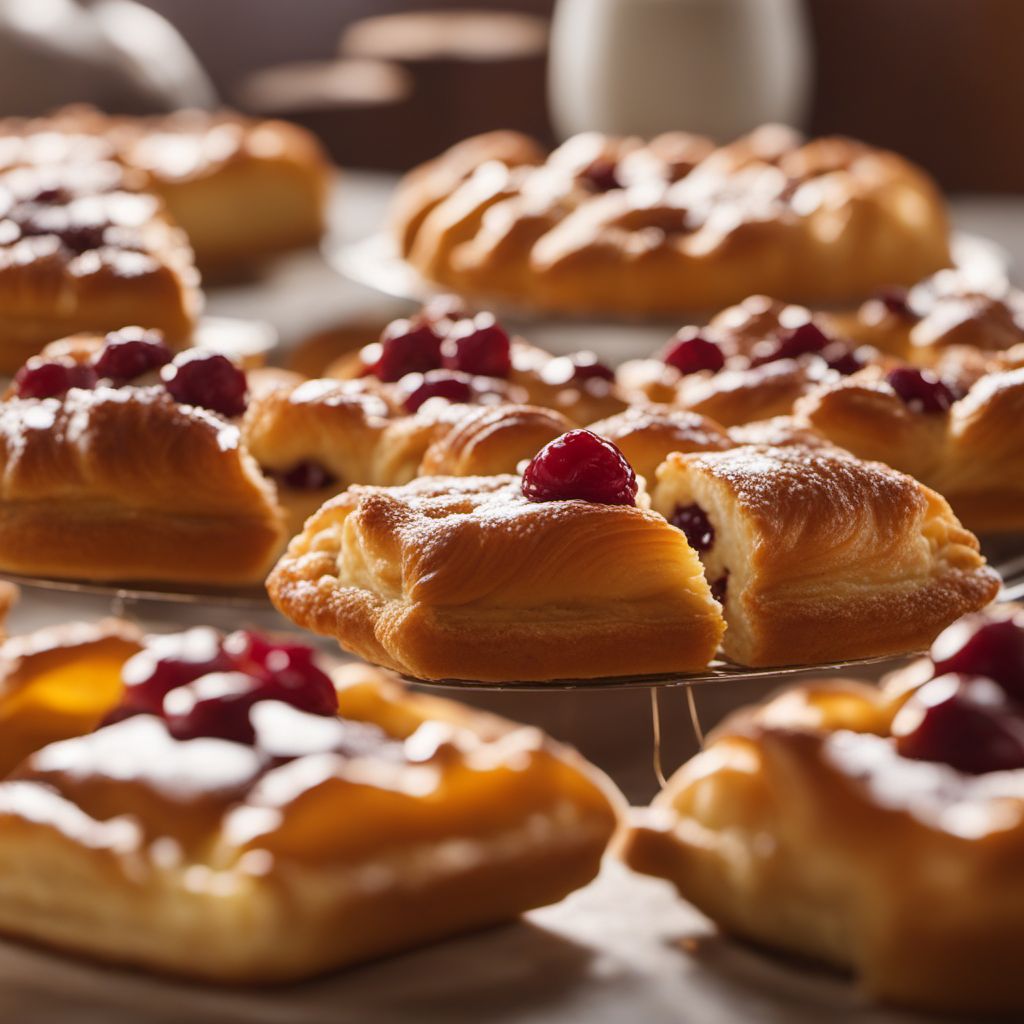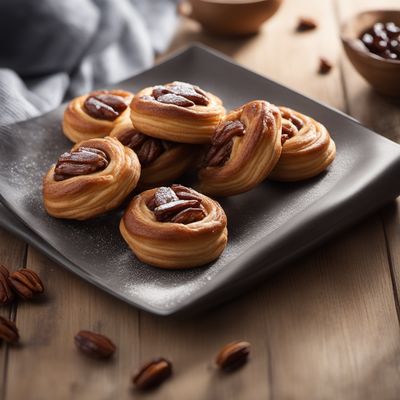
Dish
Danish Pastry
Danish pastry is a classic pastry that has been enjoyed for centuries. It originated in Denmark in the 19th century, and quickly became popular throughout Europe and the rest of the world. The pastry is made with a laminated dough that is layered with butter and sugar, then rolled and folded several times to create a light, flaky texture. The pastry can be filled with a variety of sweet or savory fillings, including fruit, cream, cheese, or meat. It is typically served as a breakfast pastry or a dessert, and is often enjoyed with a cup of coffee or tea. Danish pastry is a delicious and versatile pastry that can be enjoyed any time of day.
Origins and history
Danish pastry originated in Denmark in the 19th century, and quickly became popular throughout Europe and the rest of the world. It is now a staple pastry in many countries, and is enjoyed as a breakfast pastry or a dessert. The pastry is made with a laminated dough that is layered with butter and sugar, then rolled and folded several times to create a light, flaky texture. The pastry can be filled with a variety of sweet or savory fillings, including fruit, cream, cheese, or meat. Danish pastry is often enjoyed with a cup of coffee or tea, and is a delicious and versatile pastry that can be enjoyed any time of day.
Dietary considerations
Danish pastry is not suitable for those with gluten or dairy allergies, as it contains both wheat flour and butter. It is also high in sugar and calories, so should be enjoyed in moderation as part of a balanced diet.
Variations
Danish pastry can be made with a variety of fillings, including fruit, cream, cheese, or meat. Some popular variations include apple, cherry, blueberry, raspberry, cream cheese, and ham and cheese. The pastry can also be shaped into a variety of shapes, including twists, knots, and braids.
Presentation and garnishing
Danish pastry is typically presented on a plate or platter, and can be garnished with a dusting of powdered sugar or a drizzle of icing. The pastry can also be shaped into a variety of shapes, including twists, knots, and braids, to create an eye-catching presentation.
Tips & Tricks
To ensure a light, flaky texture, it is important to handle the dough gently and avoid overworking it. The dough should be chilled before rolling and folding to ensure the butter stays cold. When filling the pastry, be sure to leave enough space around the edges to prevent the filling from leaking out during baking.
Side-dishes
Danish pastry is often served with a side of fresh fruit or a dollop of whipped cream. It can also be served with a side of bacon or sausage for a savory breakfast option.
Drink pairings
Danish pastry is often enjoyed with a cup of coffee or tea. It can also be paired with a glass of milk or a fruit juice for a refreshing breakfast option.
Delicious Danish Pastry recipes
More dishes from this category... Browse all »

Anpan
Japanese cuisine

Antakya künefesi
Turkish cuisine

Apfelstrudel
Austrian cuisine

Appelflap
Dutch cuisine

Apple Cider Doughnut
American cuisine

Asabi
Lebanese cuisine

Asawer
Lebanese cuisine

Athirasa
Sri Lankan cuisine



